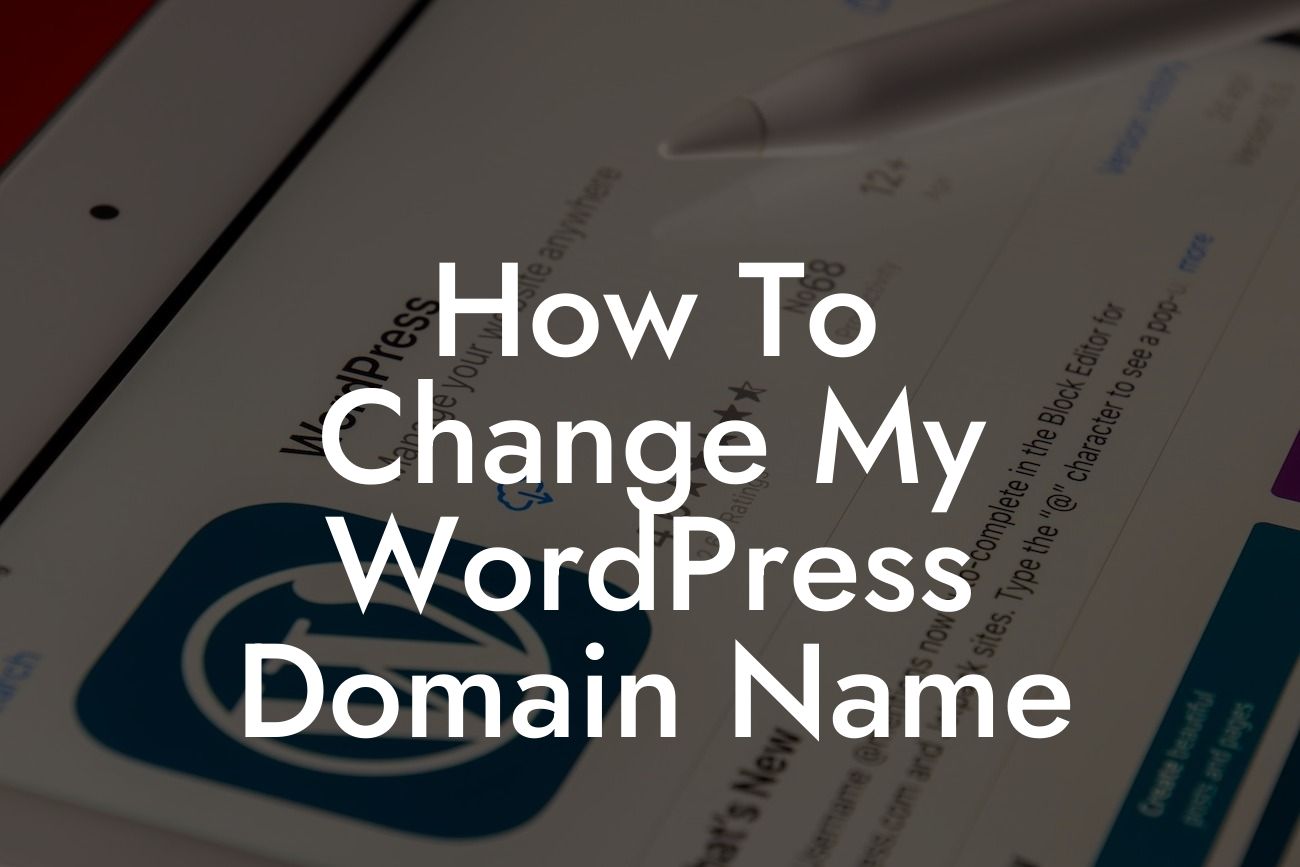Are you looking to give your WordPress website a fresh start? Changing your domain name can help rebrand your online presence and attract new customers. But the process can be daunting, especially if you're not familiar with WordPress settings and configurations. In this guide, we will walk you through the step-by-step process of changing your WordPress domain name. Whether you're a small business owner or an entrepreneur, DamnWoo has got you covered with our expert advice and remarkable plugins.
Changing your WordPress domain name involves a few crucial steps to ensure a seamless transition. Let's dive into each step to make sure you don't miss a beat.
1. Evaluate your decision:
Before you change your domain name, it's essential to evaluate your reasons for doing so. Consider whether the change aligns with your business goals and branding. Make sure to inform your existing audience about the change to avoid confusion.
2. Choose a new domain name:
Looking For a Custom QuickBook Integration?
Selecting a new domain name requires careful thought and consideration. It should be relevant to your business, easy to remember, and reflect your brand identity. Use tools like Google's Keyword Planner to find keyword-rich domain names that can boost your website's search engine optimization (SEO).
3. Backup your WordPress website:
Creating a backup of your WordPress website is crucial to avoid any data loss or potential issues during the domain name change. Use reliable backup plugins like DamnWoo's Backup Buddy to securely store your website files and databases.
4. Update WordPress settings:
Now it's time to update your WordPress settings with the new domain name. Access your website's wp-config.php file via FTP or your hosting provider's file manager. Look for the line stating "define('WP_SITEURL', 'https://www.old-domain.com');'' and replace it with your new domain name. Ensure that you change both the URL and the HTTPS version if applicable.
5. Update website links and content:
After updating the WordPress settings, you need to update all internal links within your website. Use the Velvet Blues Update URLs plugin to automatically replace old URLs with the new domain name throughout your content and permalinks.
6. Set up domain redirection:
To ensure a smooth transition for your users and search engines, set up domain redirection from your old domain to the new one. Redirects can be done at the server level or through a WordPress plugin like Yoast SEO Premium. Configure a 301 redirect to redirect all traffic to the new domain.
How To Change My Wordpress Domain Name Example:
Let's say you currently have a WordPress website with the domain name "old-domain.com." You've decided to rebrand your business and change your domain name to "new-domain.com." By following the steps outlined above, you can seamlessly transition to the new domain name and maintain your online presence without any disruptions.
Congratulations on successfully changing your WordPress domain name! By taking control of your online presence, you're one step closer to achieving your business goals. Remember to share this article with others who may benefit from it. Explore more guides on DamnWoo to discover valuable insights and unleash the full potential of your website. Don't forget to try out our awesome plugins designed exclusively for small businesses and entrepreneurs. Together, let's embrace the extraordinary!













